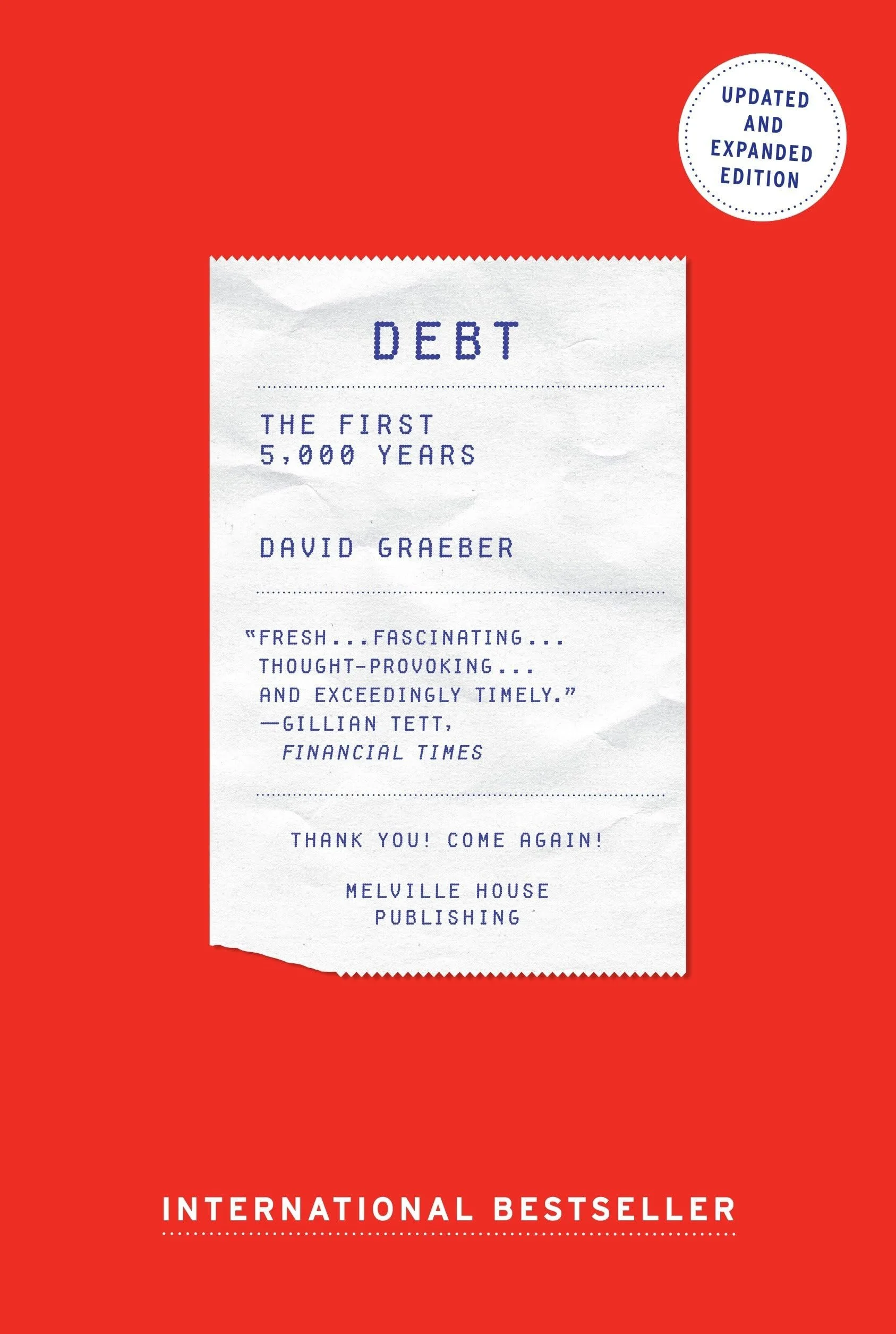Debt:The First 5,000 Years
I’ve read a number of books on monetary history, but Debt: The First 5,000 Years took me in a direction I hadn’t expected. I bought it purely based on the title, somewhat assuming it would be a detailed history of monetary debt and the consequences of excessive borrowing. Instead, I was surprised to find that it explores the topic from a broader and more philosophical lens, focusing on society’s relationship with debt itself.
Rather than a narrow view on the mechanics of monetary systems, Graeber examines the social and psychological dimensions of debt, credit, and exchange. He challenges the conventional economic narrative that money evolved from barter through the “double coincidence of wants.” Instead, he argues that debt and credit relationships came first, with money emerging later as a way to quantify and settle those obligations more consistently.
At first glance, that distinction might sound minor, but Graeber makes a compelling case for why it matters. Framing money as a byproduct of debt rather than barter changes the view on our relationship to value, obligation, and morality. He details how throughout history, debt has shaped not only economies but also hierarchies, power structures, and even human behaviour. I should make clear that I’m not necessarily sold on the idea however having read relatively extensively on the theory of barter giving rise to money, its thought provoking to challenge the premise and look at it through a different lens.
The book can be quite dense but does a job of rewarding your patience with historical examples that trace how debt has influenced everything from ancient civilizations to modern financial crises.
This was my first encounter with Graeber’s work, but I suspect won’t be my last. His combination of anthropological perspective and economic insight made for an interesting read and one that lingers long after you finish.
Who’s it for?
Anyone interested in monetary history, economics, or the philosophical underpinnings of debt should find this enlightening. It’s especially timely given today’s global debt landscape, where the lessons of history seem more relevant than ever. Whether you’re well-read on the topic or exploring it for the first time, Debt: The First 5,000 Years offers a fresh and deeply insightful perspective on how debt has shaped and continues to shape human civilization.

